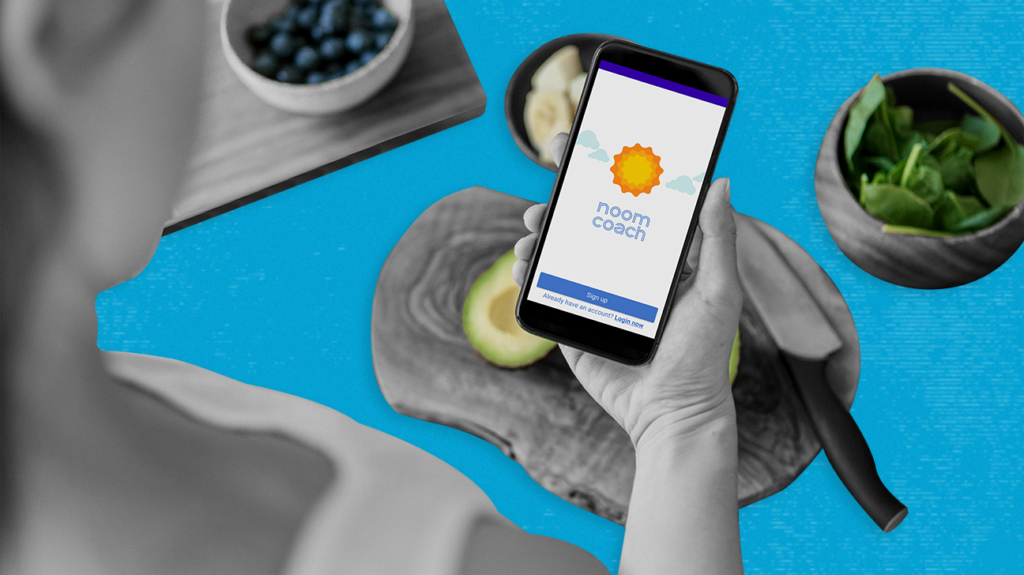In the crowded world of health apps and weight‑loss programs, Noom positions itself not just as a diet tracker or fitness app, but as a behavioral change platform that combines psychology, coaching, and optional medical support. I explored Noom’s approach, offerings, strengths, and considerations — here’s what I found.
What Is Noom?
Noom describes itself as a comprehensive weight‑loss and health platform that integrates psychology, technology, and coaching to help users build healthier habits and sustain weight loss.
Over time, it has evolved into a modular system:
- Noom Weight: The core behavior‑change program focusing on daily lessons, food logging, habit formation, coaching, and tracking tools.
- Noom Med / GLP‑1 Programs: For those who might benefit from weight‑loss medication, Noom offers clinician access and prescription services (where eligible) integrated with their behavior change process.
- Other wellness tools: calculators (calorie, macro), personality quizzes, stress relief, menopause & HRT modules, etc.
In short: Noom aims to help people lose weight and keep it off by shifting why they make certain choices, not just what choices they make.

Key Features & How It Works
Here are some standout features and how a user experiences the Noom journey:
| Feature | How It Helps | What You’ll Experience |
|---|---|---|
| Daily micro‑lessons | Educating mindset and behavior change | Short lessons delivered daily teach you about habit formation, decision making, and psychology |
| Food logging + color‑coding | Raising awareness of food choices | Foods are often categorized by “green/yellow/red” to guide healthier choices |
| 1:1 Coaching (AI + human) | Accountability and support | You get chat access to coaches, tips, feedback, and motivation |
| Medical / prescription support (where eligible) | Support for users who benefit from meds | In “Noom Med / GLP‑1” plans, you may qualify for medications (e.g. Ozempic, Wegovy) via clinician consultation through the app. |
| Community & peer support | Social encouragement | Features like “Noom Circles” or community forums allow you to connect with others on similar journeys |
| Progress tracking & feedback | Reinforcement | Tools track your weight, activity, food, and other behaviors to help you see patterns and growth |
One of Noom’s central themes: it doesn’t just ask you to eat “less” — it tries to coach you why and how to make sustainable shifts in thinking and behavior.
What Makes Noom Different
- Psychology-first approach
Many diet or fitness apps focus on calories in/calories out. Noom leans heavily on behavior change principles: identifying triggers, biases, emotional eating, and mindset. - Adaptive, personalized experience
You start with a quiz about your goals, lifestyle, preferences, and the app tailors lessons and suggestions accordingly. - Medication integration (for eligible users)
While many programs either offer coaching or medical interventions, Noom tries to combine both (for those who qualify), giving a more holistic support system. - Sustainability over short-term fixes
Noom often emphasizes lasting changes: “Don’t just lose weight — keep it off.” - Emphasis on habit scaffolding & micro‑changes
The “Go Micro for Big Results” tagline suggests its philosophy: small actionable steps build up to big transformations.
Strengths & Potential Benefits
- Better long-term adherence: Because Noom targets mindset and habits, users may find it easier to stick with changes versus crash diets.
- Support network & accountability: Coaching, community, and feedback create external motivation.
- Flexibility: You can still choose foods you like; the emphasis is on moderation and awareness more than rigid rules.
- Medical oversight when needed: For users dealing with medical or biological obstacles, the option to access medication coaches may bridge an important gap.
- Educational aspect: You gradually build health literacy — why certain foods affect you, how your environment influences decisions, etc.

Challenges & Things to Watch Out For
- Cost & subscription model
Like many health/diet apps, Noom is subscription-based. Depending on region and package, the price may be steep for some users. - Not everyone qualifies for medication plans
The GLP‑1 / prescription options are only available to eligible users through clinician review. - Data entry / logging effort
Tracking food, habits, logging meals requires consistency. Some users may find it tedious over the long run. - Medical disclaimers & limitations
The site notes that medications require clinician oversight, not all users qualify, and compounded meds are not FDA‑reviewed. - Not for everyone
The FAQ states that Noom is not suitable for those under 18, pregnant women, those with eating disorders, or underweight individuals.
How to Get Started
- Take the introductory quiz — answer questions about your goals, lifestyle, preferences.
- Receive your personalized plan — your journey is tailored to you (Noom Weight or with medication support if eligible).
- Engage with daily lessons & logging — commit to the bite‑sized content and log your meals, behaviors, and progress.
- Use coaching — ask questions, get accountability, stay motivated through coach check-ins.
- Be consistent — the science of habit change is built on repeated small behaviors over time.
- Review & adjust — as you progress, the plan may evolve to match your changing needs.
Final Thoughts
Noom aims to stand out from fad diets and quick-fix promises by focusing on why people eat, drink, move — and helping them reshape beliefs and routines. For those who are willing to invest time, effort, and possibly money, it presents a compelling option for long-term, sustainable change. That said, it’s not a magic bullet, and success depends heavily on user consistency and alignment with one’s personal health circumstances.

